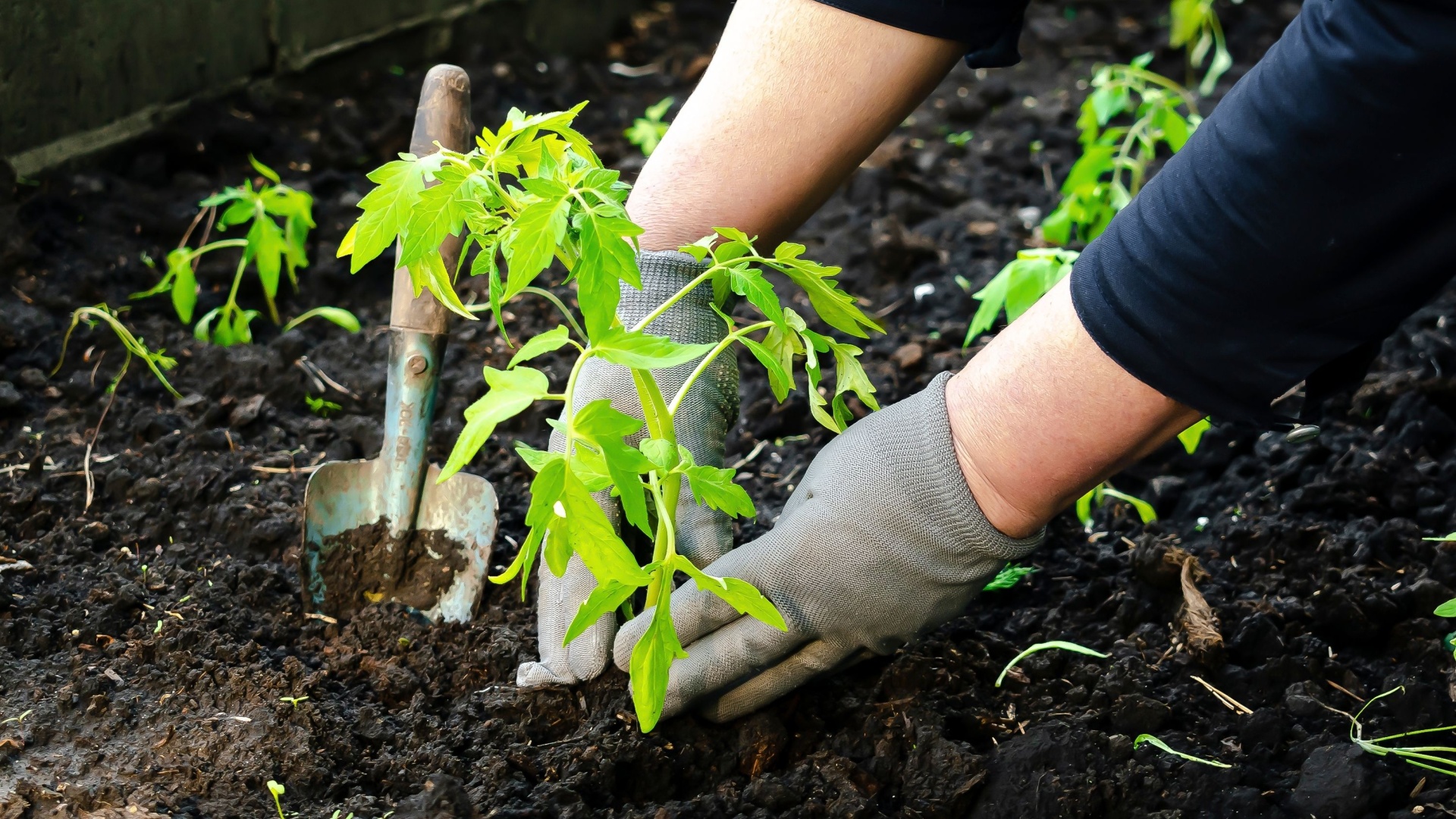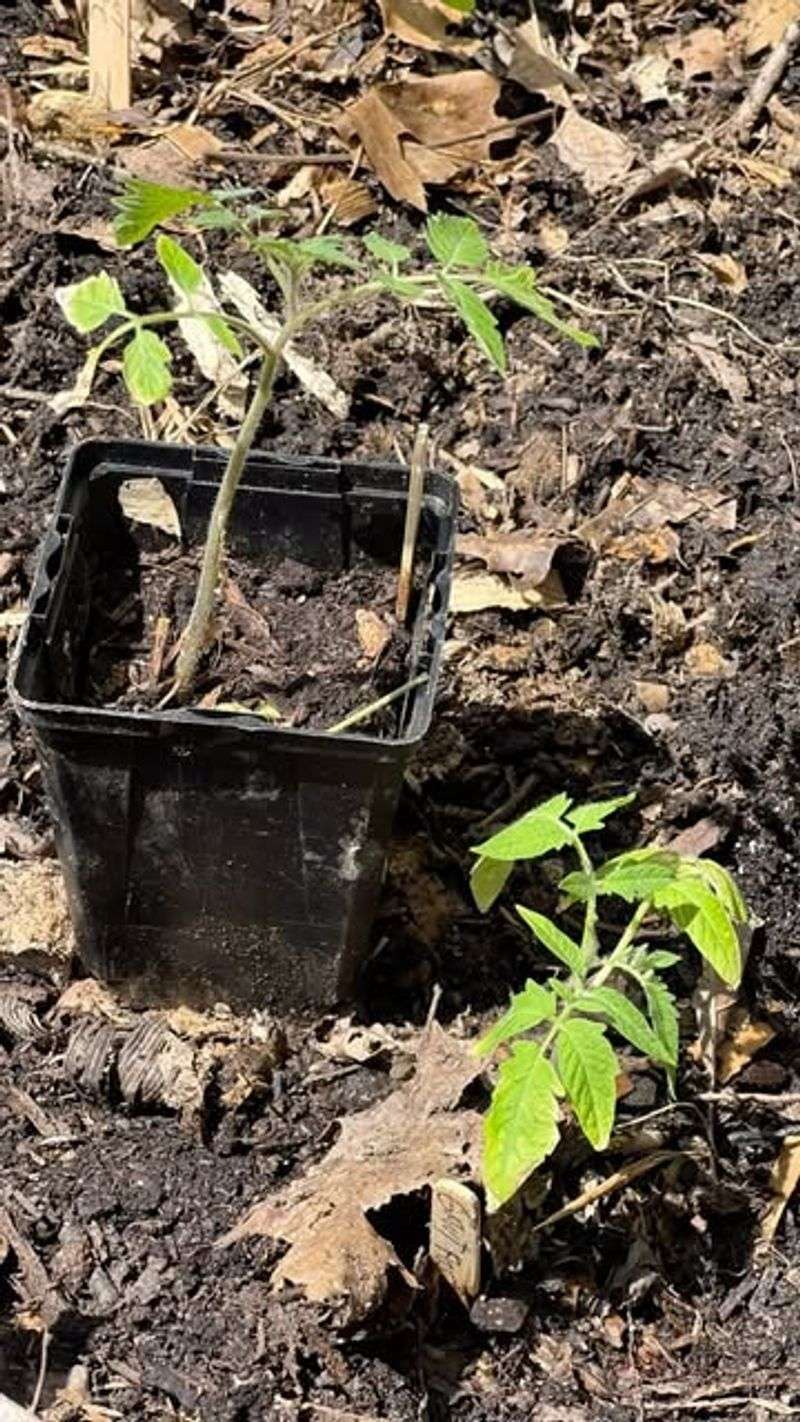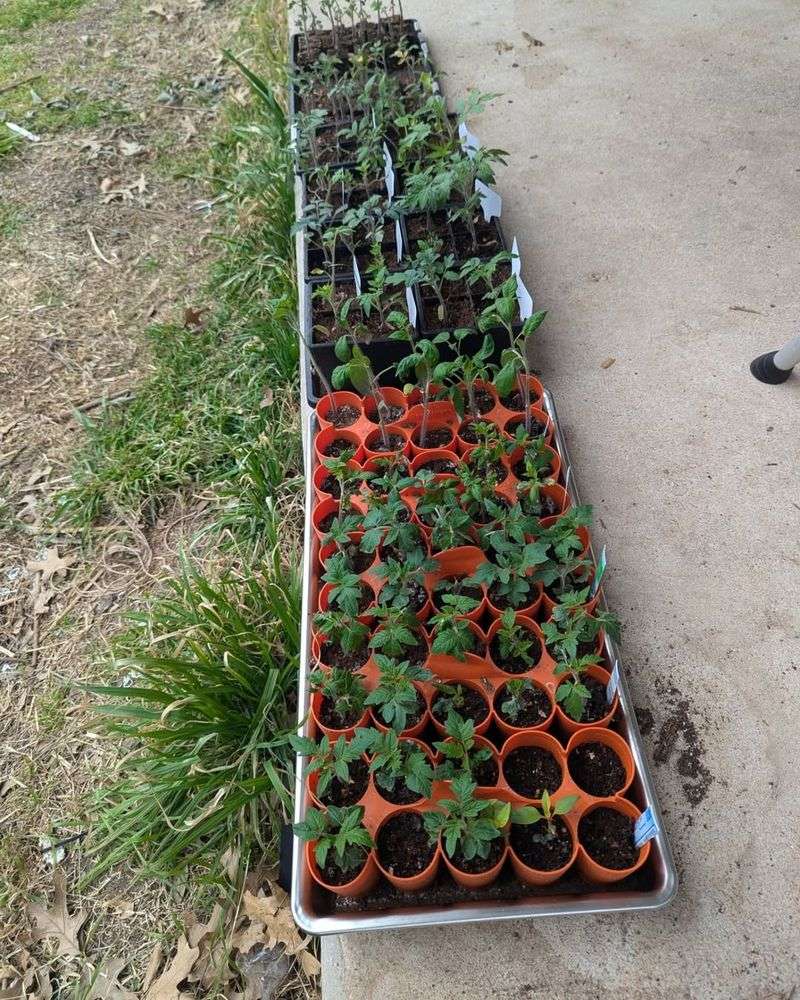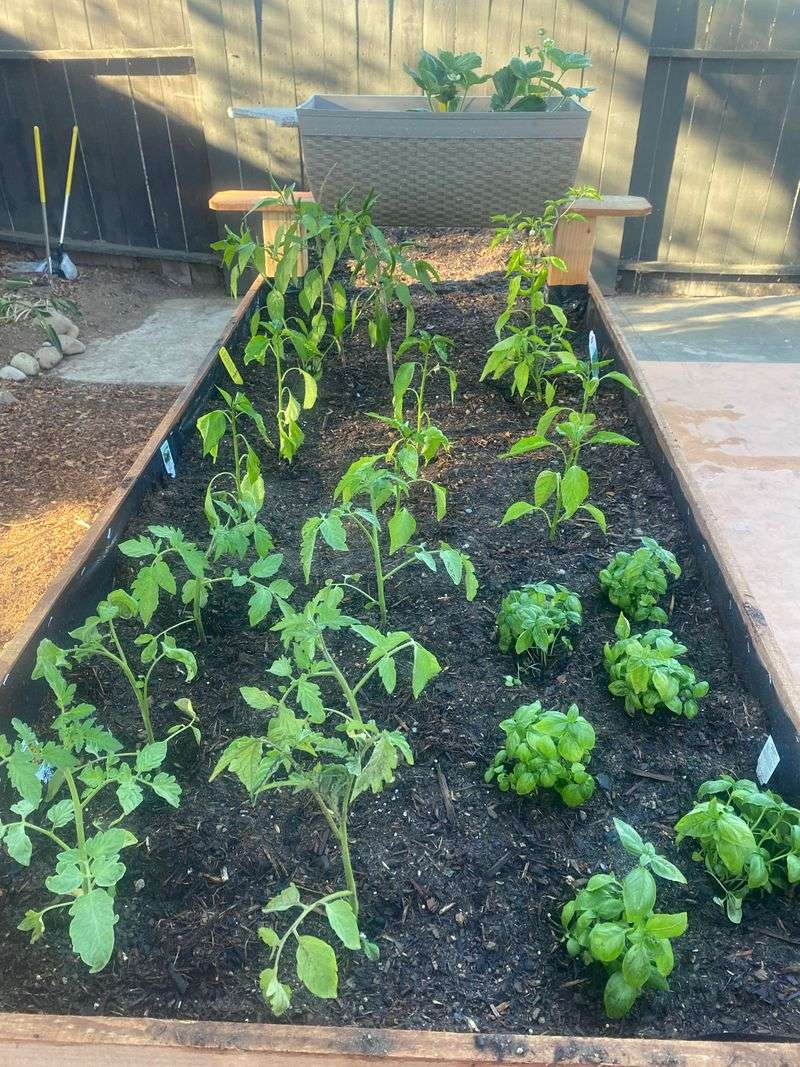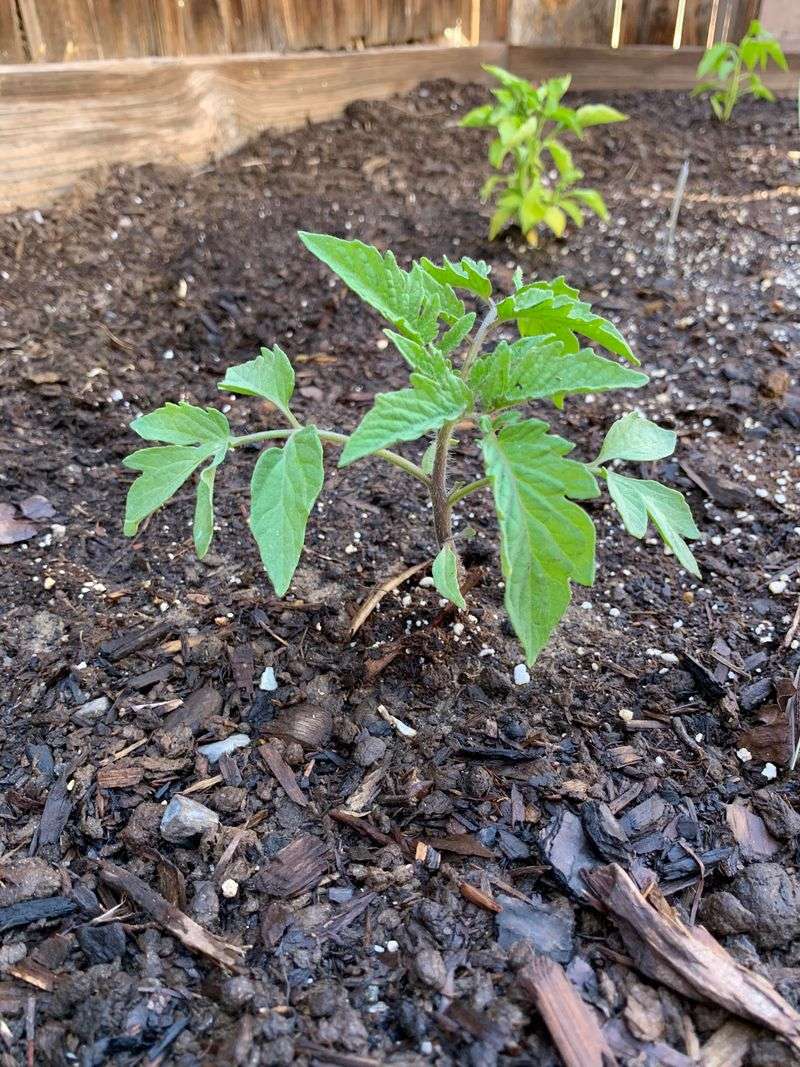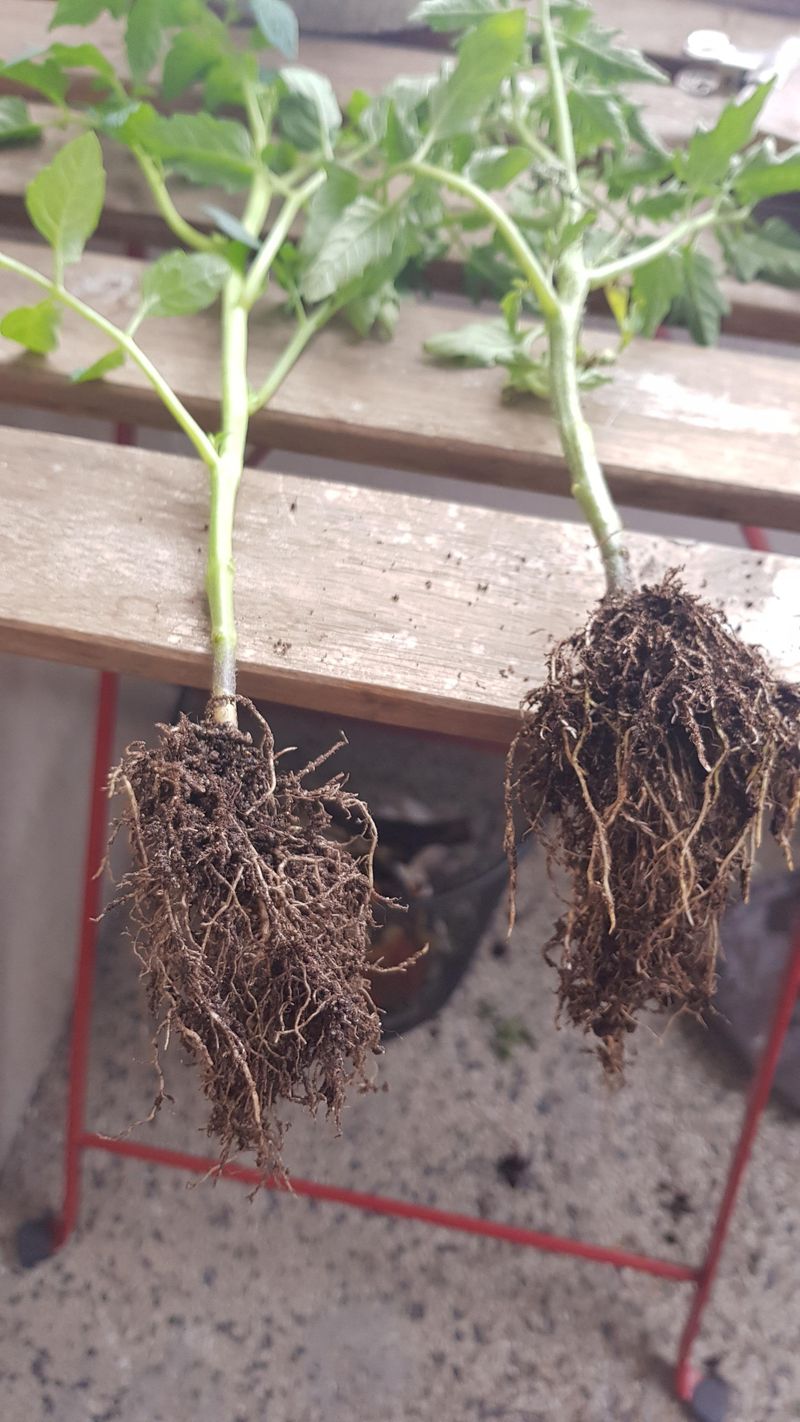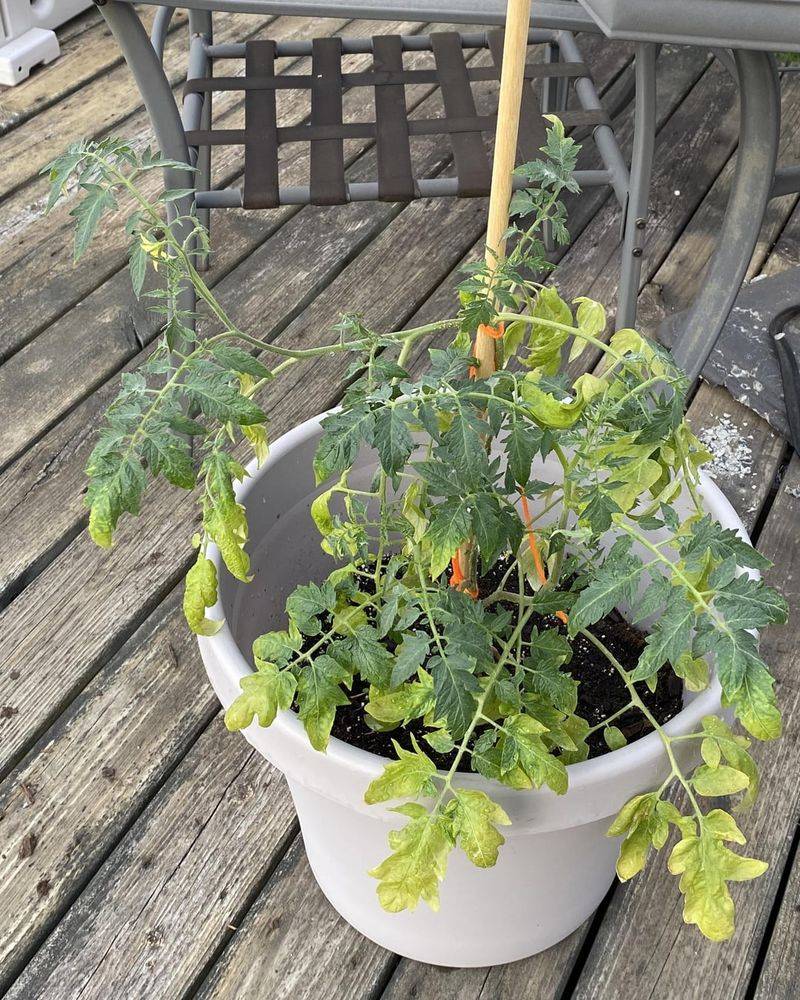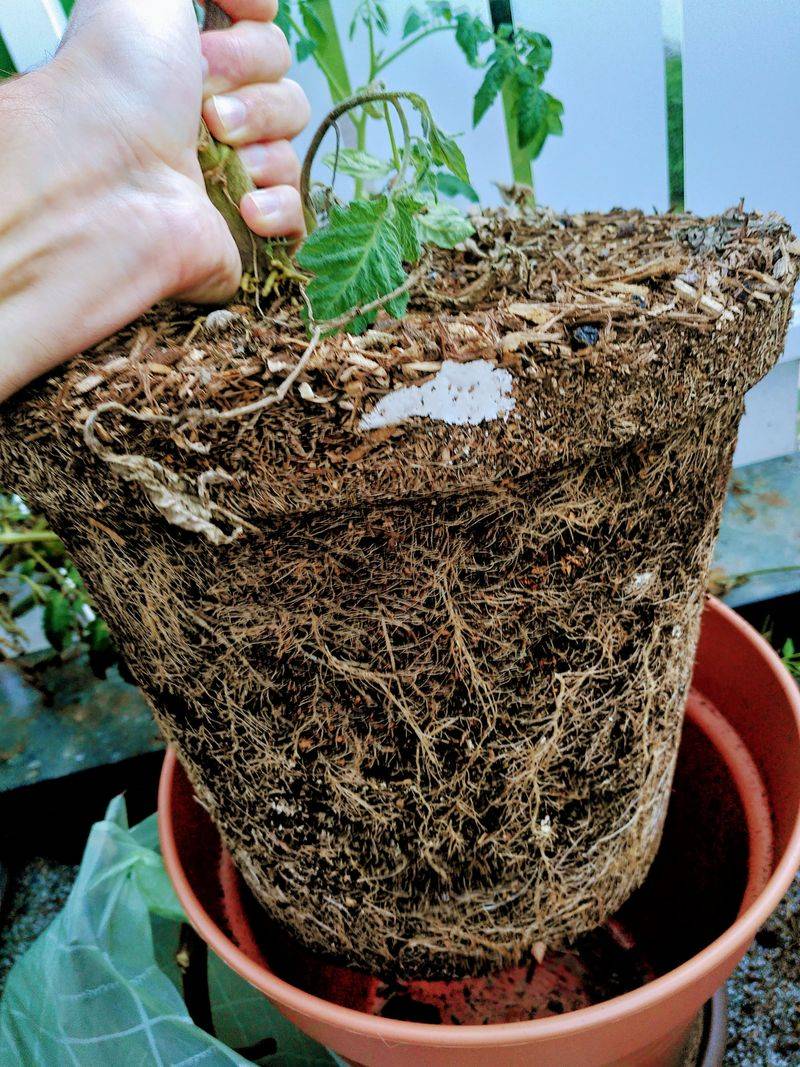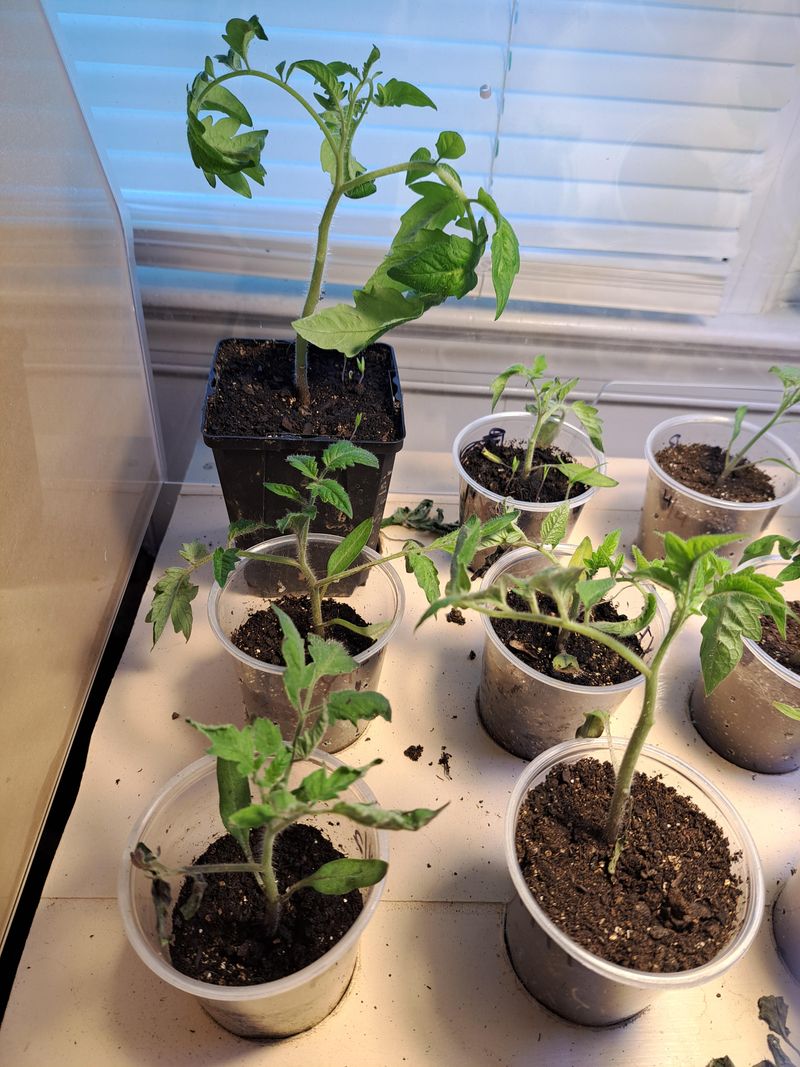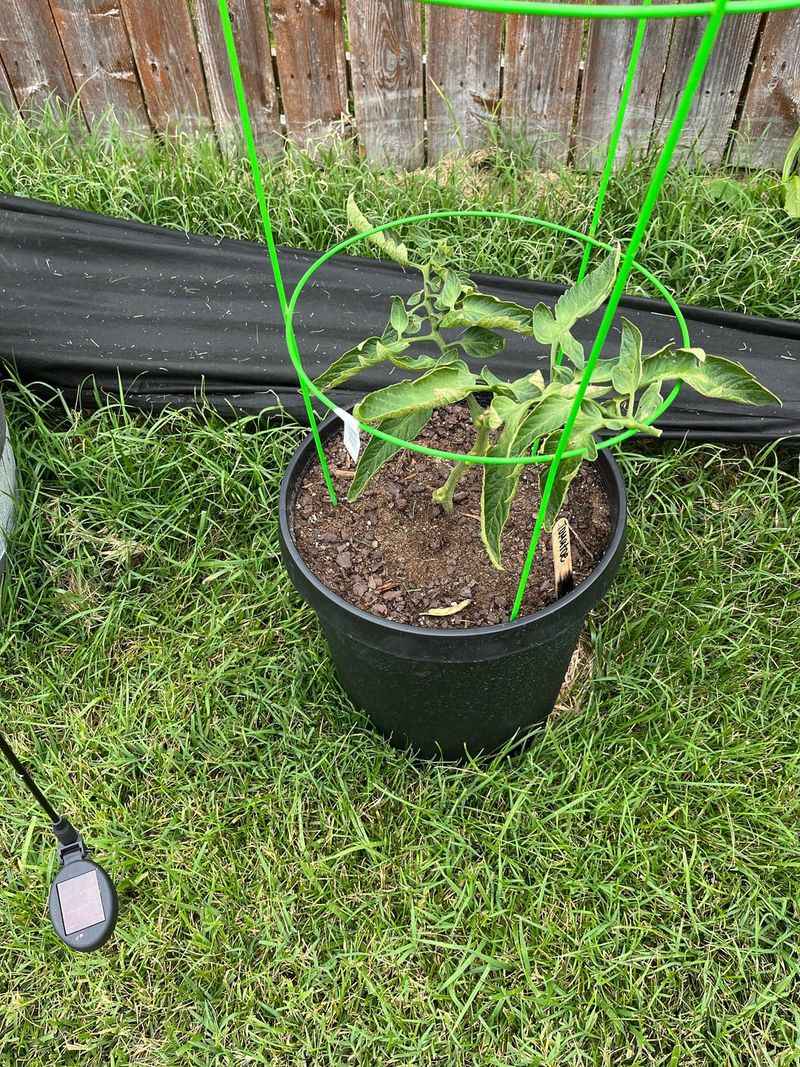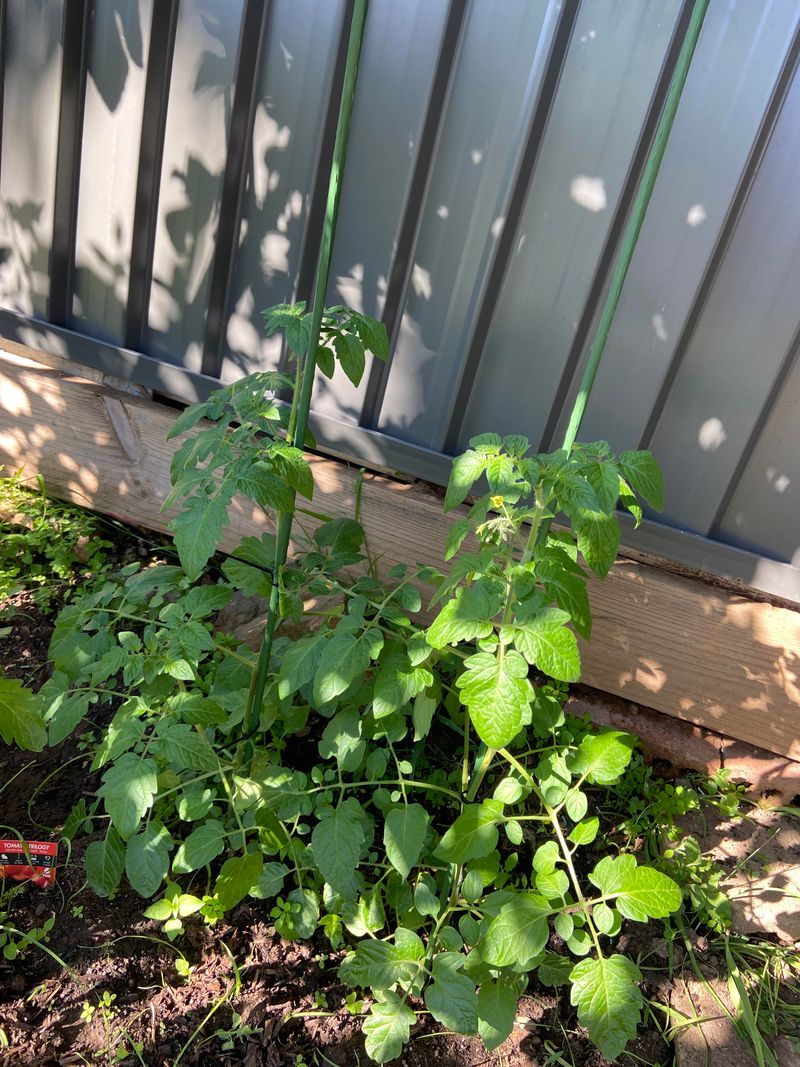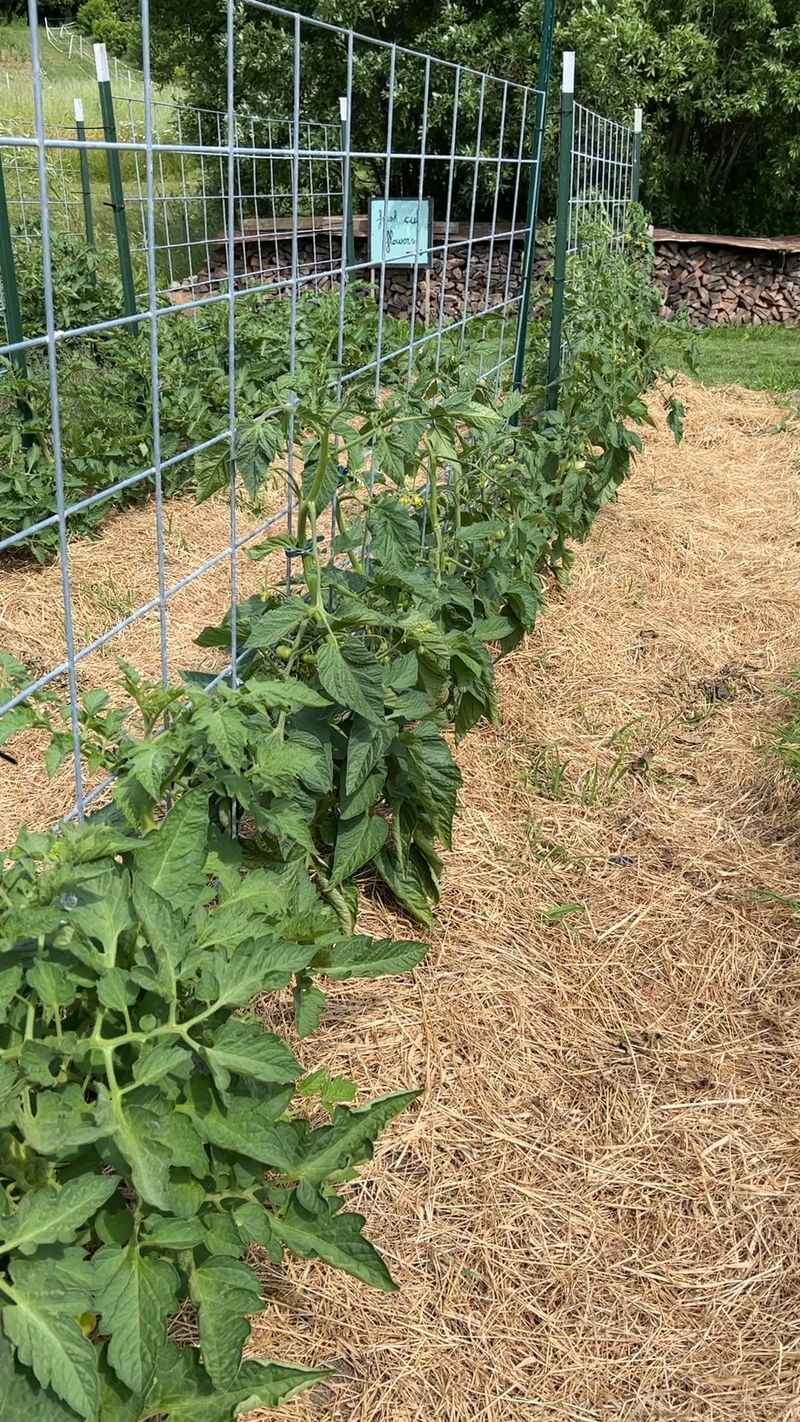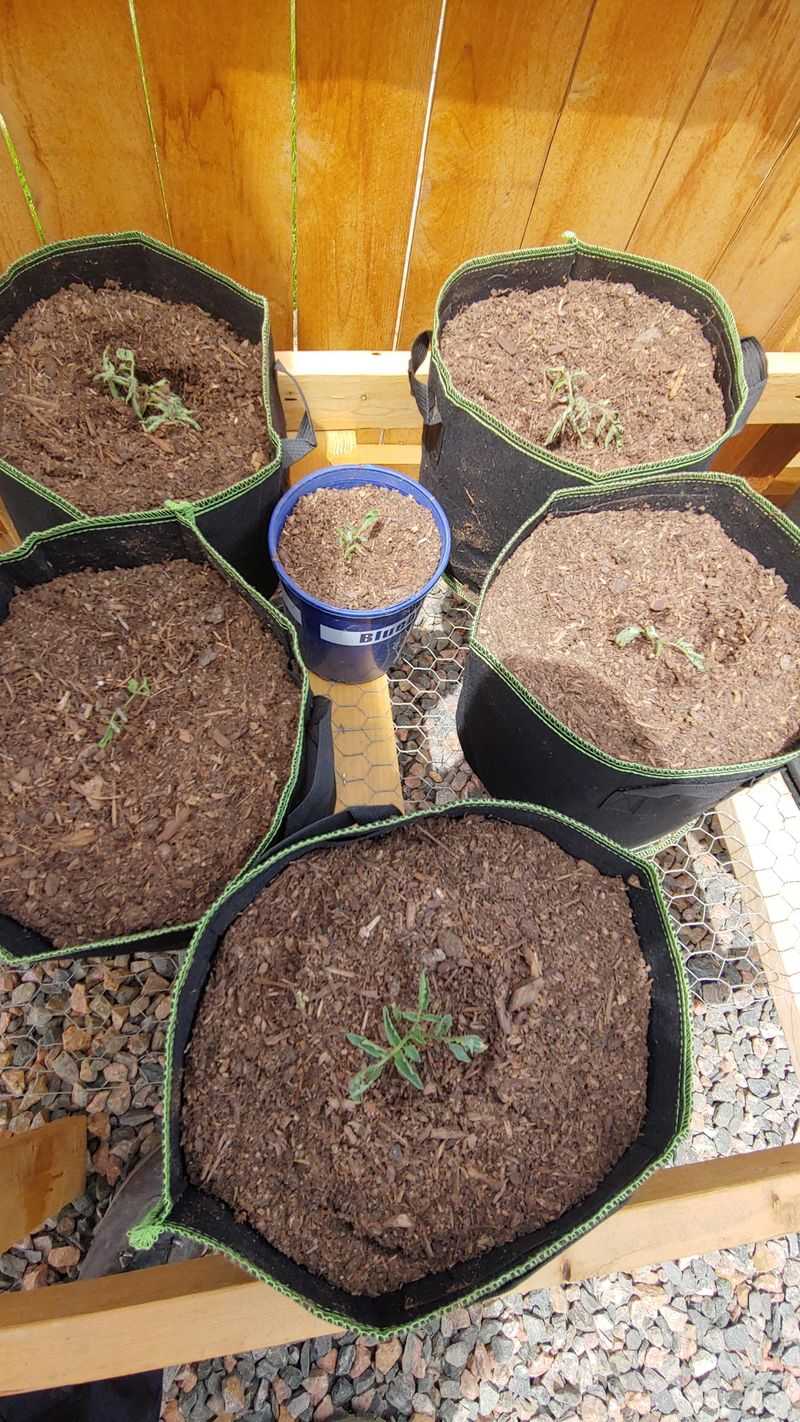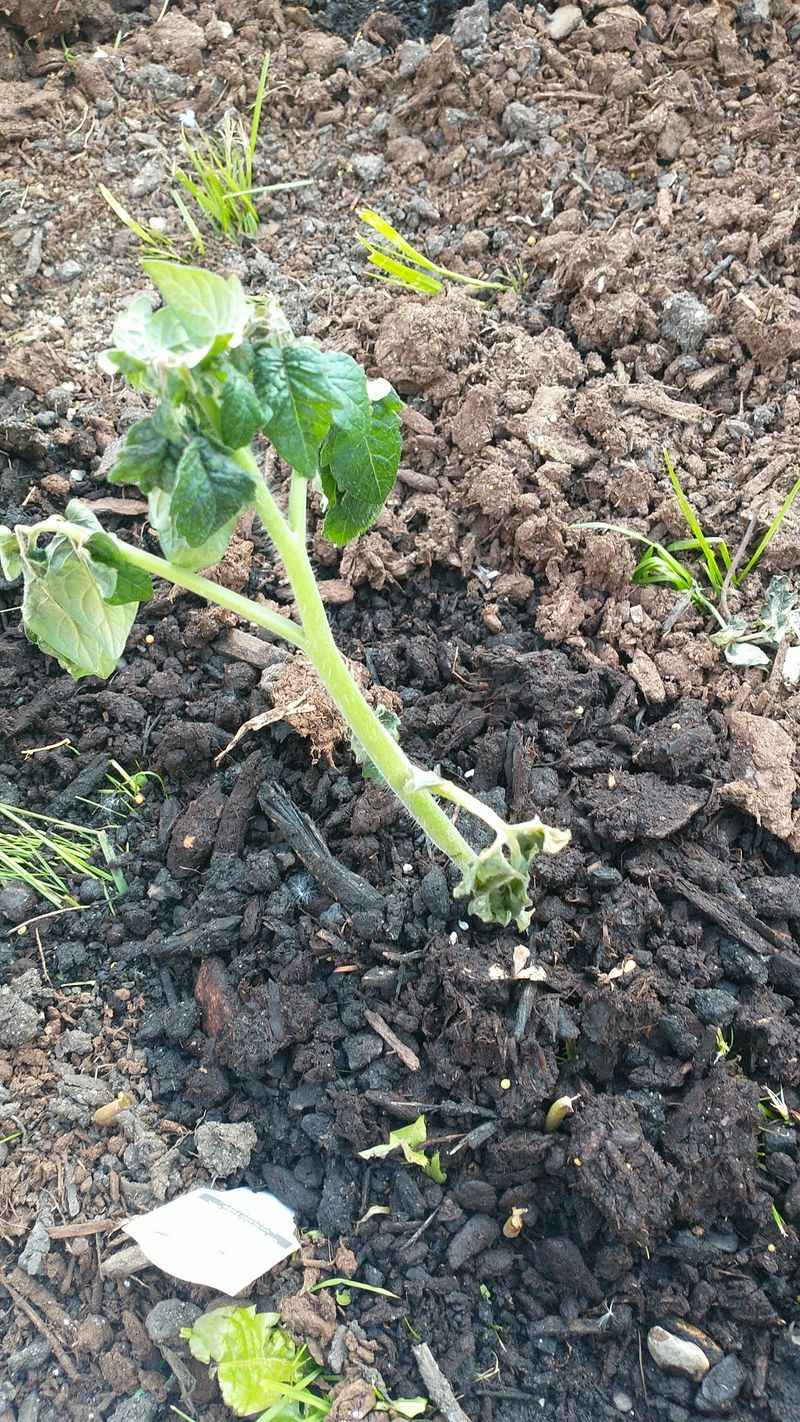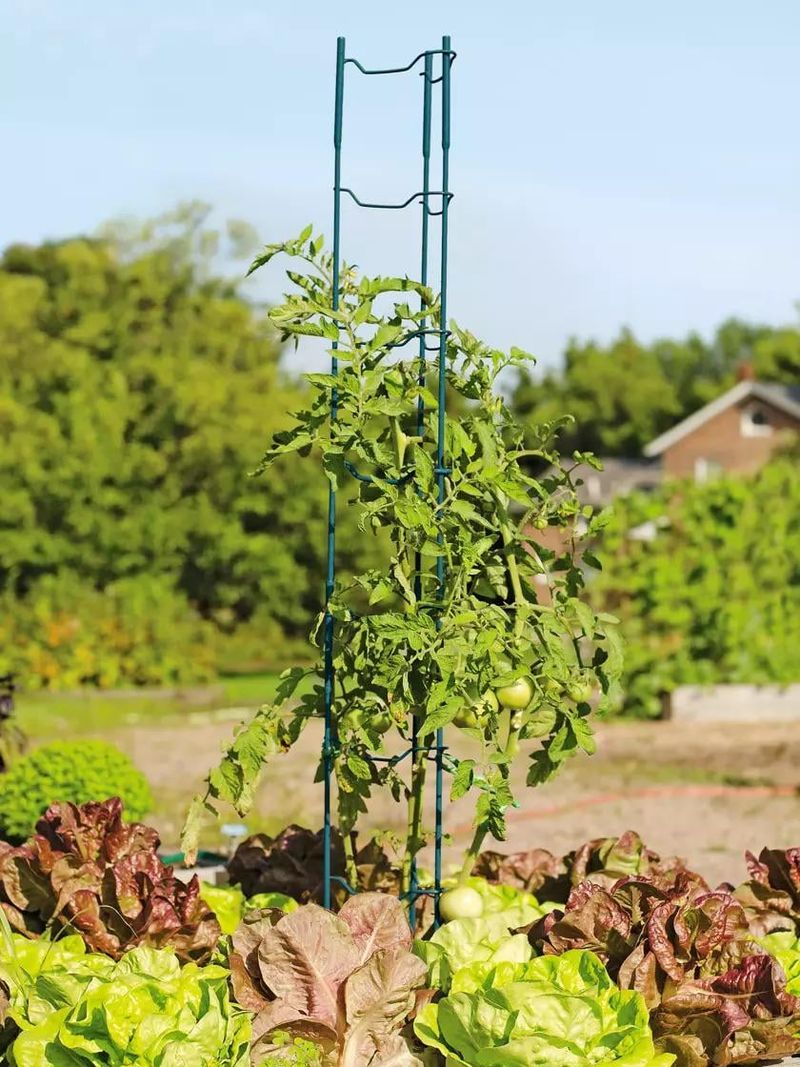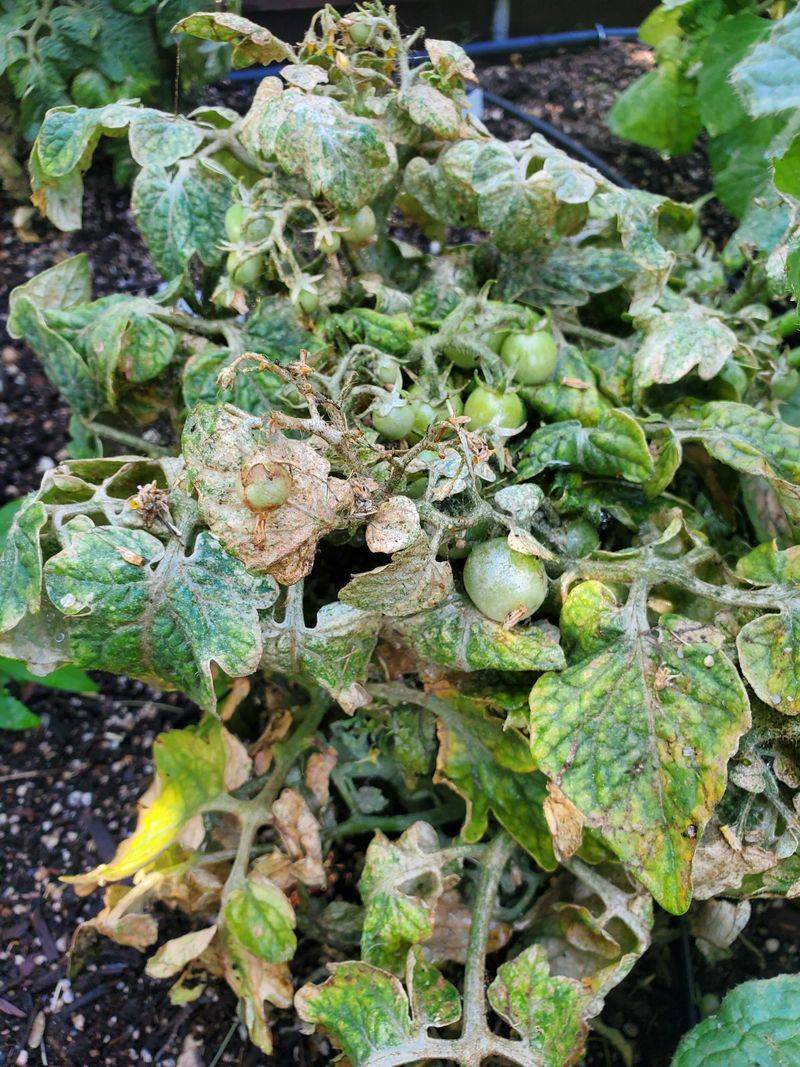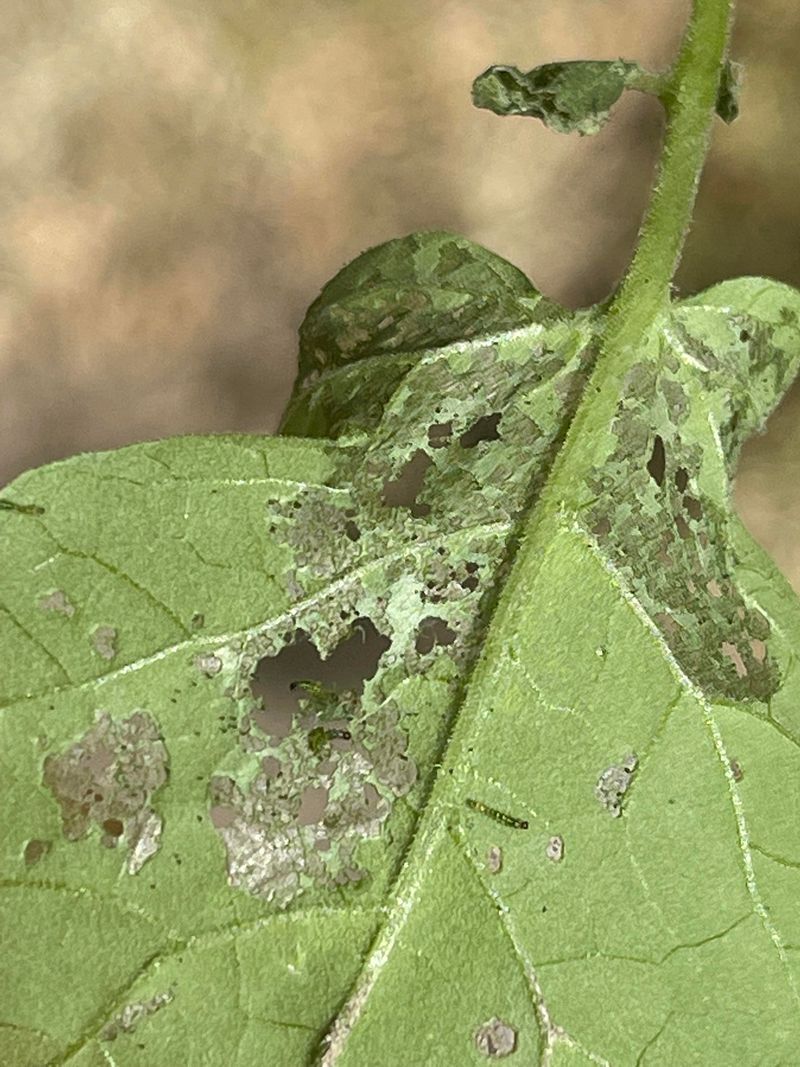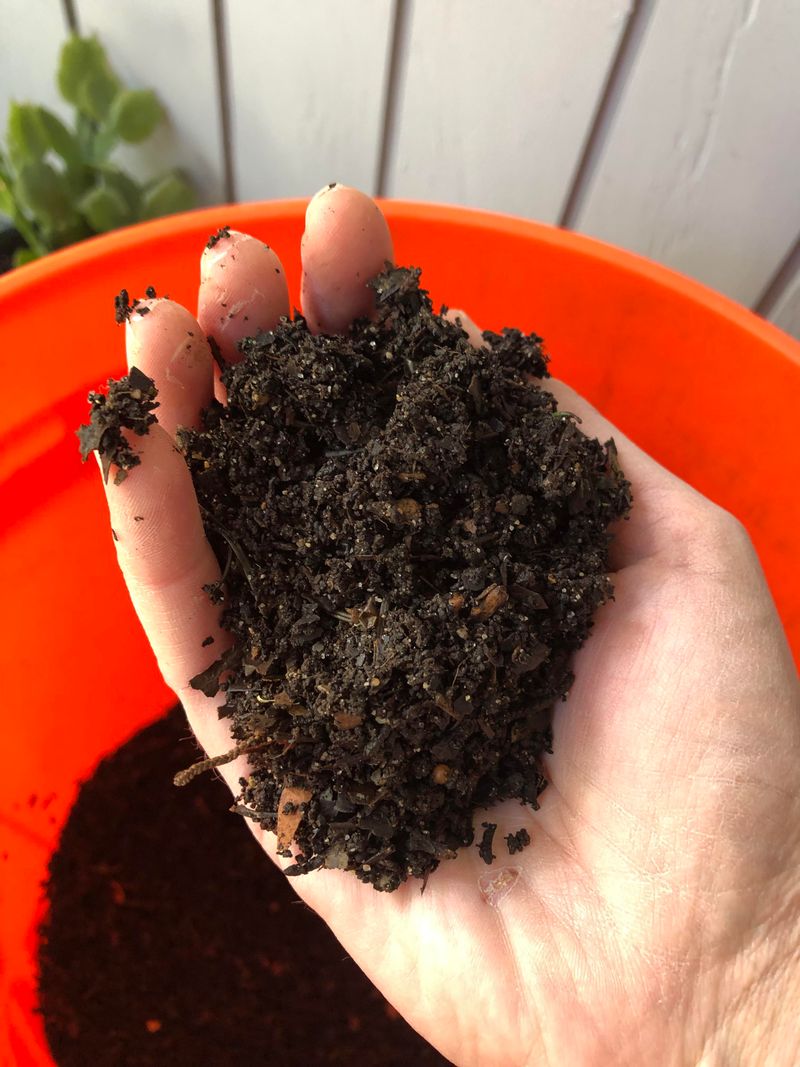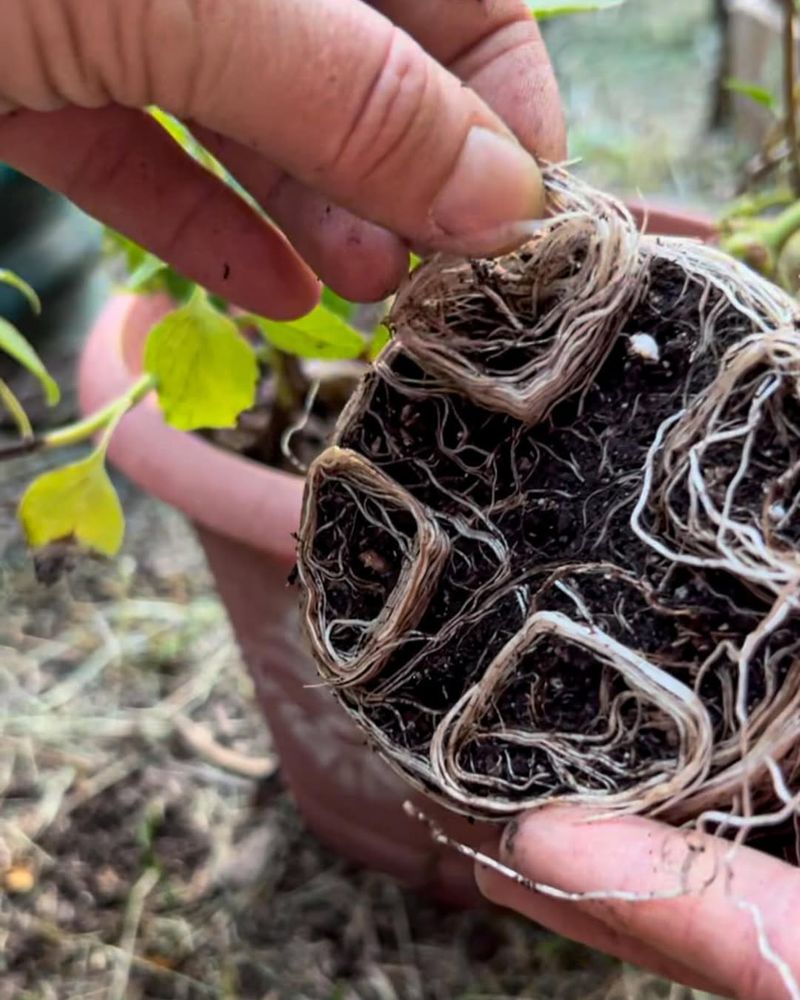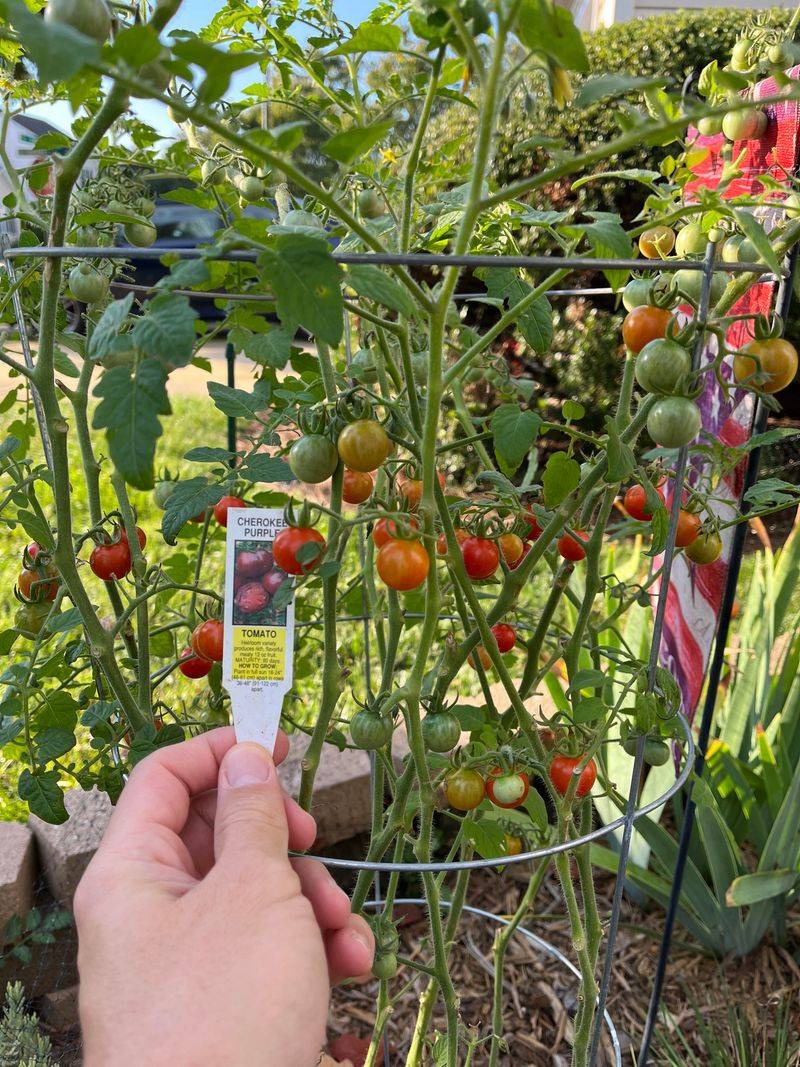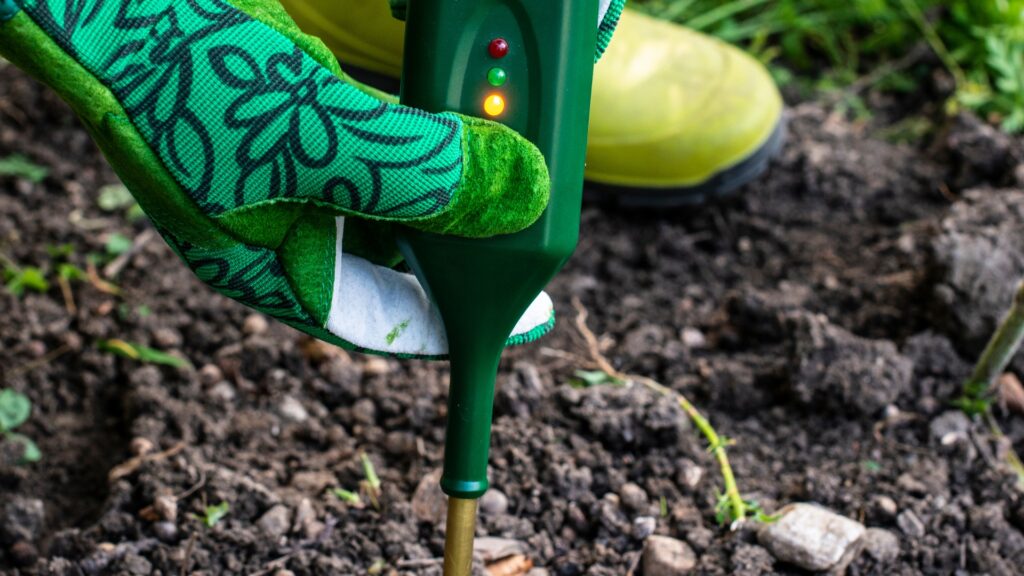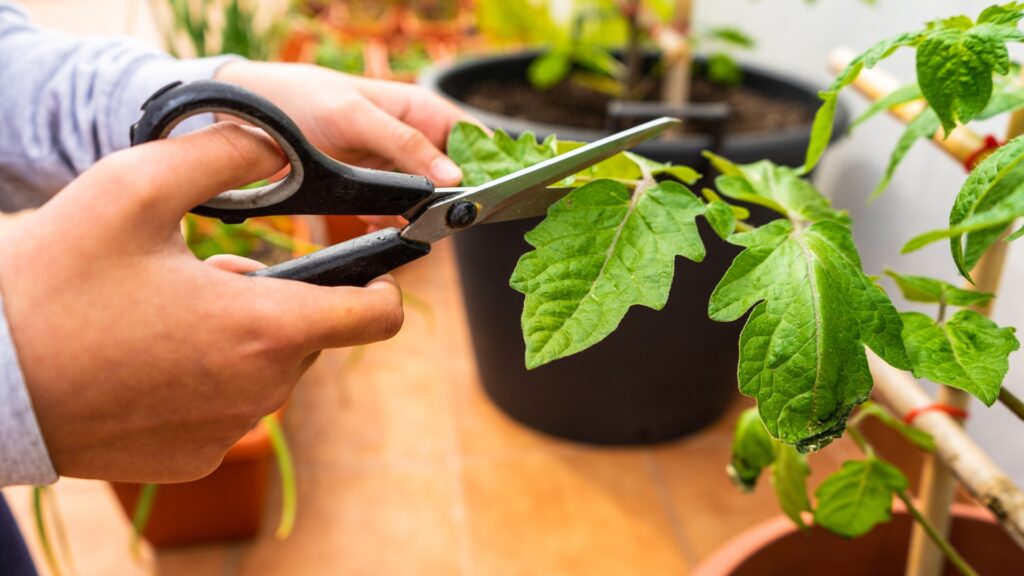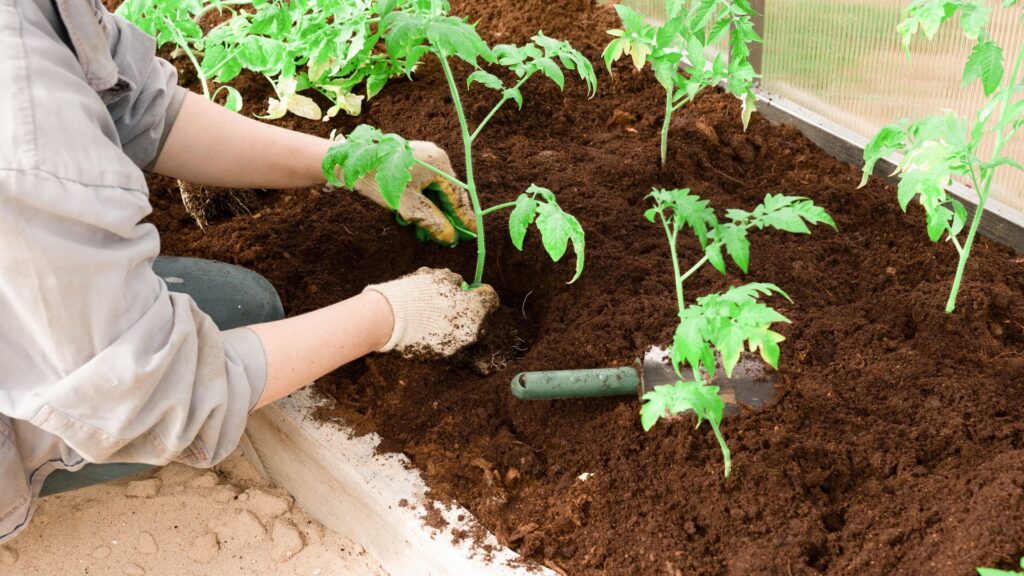Transplanting tomatoes is a major gardening milestone—but it’s also where even seasoned green thumbs can hit a bump in the road.
After getting my hands dirty and learning the hard way (more than once!), I’ve rounded up the most common transplanting blunders so you don’t have to reinvent the wheel. So let’s roll up our sleeves, dig in, and get your tomatoes off to a flying start—strong, thriving, and ready to steal the spotlight in your garden.
1. Transplanting Too Early in the Season
Transplanting tomato seedlings too early can lead to frost damage. Cold soil stunts growth and can even kill young plants. Always check local frost dates before planting. If the soil temperature is below 60°F, it’s too soon.
Wait for warmer days, and use a soil thermometer to be sure. Planting at the right time ensures robust growth. Consider using row covers for added protection early in the season.
Observing these conditions can be the difference between thriving plants and a disappointing harvest. Patience pays off when it comes to transplanting tomatoes!
2. Skipping the Hardening-Off Process
Moving tomato seedlings straight from a cozy indoor setup to the garden can be a shock to their system—often resulting in wilted, stressed plants.
Hardening off is the essential step that helps them adjust gradually to outdoor conditions like sun, wind, and fluctuating temperatures. Over the course of 7–10 days, start by placing seedlings in partial shade for a few hours a day, slowly increasing their time outside and exposure to direct sunlight.
This gentle transition builds resilience and prepares them for a successful life in the garden.
3. Planting in the Same Soil Every Year
Reusing the same soil for tomatoes season after season may seem convenient, but it can lead to serious problems like nutrient depletion and a buildup of soil-borne diseases.
Pathogens that affect tomato health can linger in the soil, weakening future crops and reducing yields. To keep your garden thriving, rotate your tomatoes to a new spot each year and consider planting nutrient-replenishing crops like legumes or leafy greens in between.
Regularly amending soil with compost or organic matter also restores fertility and supports long-term health.
4. Planting Too Shallow or Too Deep
Getting the planting depth right is key to strong, healthy tomato plants. Planting too shallow leaves seedlings unstable and vulnerable to stress, while planting too deep can risk stem rot.
The sweet spot? Bury the seedling up to its first set of true leaves—tomatoes can grow roots along the buried stem, which strengthens the plant and supports robust root development.
This simple technique helps your tomatoes stand tall, resist wind, and absorb more nutrients. Paying attention to planting depth ensures your tomatoes get the best possible start for a thriving, high-yield season.
5. Damaging Roots During Transplant
Tomato seedlings may look tough, but their roots are surprisingly delicate—and rough handling during transplant can set them back significantly.
Tugging, squeezing, or disturbing the root ball can stunt growth and increase transplant shock. To protect your plants, gently remove seedlings from their pots, keeping the root structure intact, and use a trowel to create roomy planting holes.
Handling with care not only reduces stress but also promotes faster establishment and stronger growth.
6. Not Watering Immediately After Transplanting
Watering tomato seedlings right after transplanting is one of the most important steps for a smooth transition.
It helps settle the soil around the roots, reduces transplant shock, and ensures good contact for nutrient absorption.
Without immediate watering, roots can dry out quickly, making it harder for the plant to establish and grow. Apply water generously to thoroughly saturate the root zone and encourage early root expansion.
7. Using Poor Soil or Not Improving It Before Transplant
Planting tomatoes in poor, compacted soil is one of the fastest ways to stunt their growth and limit their potential. Tomatoes thrive in loose, fertile soil rich in organic matter, so taking time to amend your garden or container mix with compost, aged manure, or other organic material pays off big.
These additions improve drainage, structure, and nutrient availability—giving roots the perfect environment to grow strong and deep. Investing a little effort in soil prep sets the foundation for vigorous plants and abundant harvests.
8. Transplanting Into Containers That Are Too Small
Small containers restrict root growth, so choose pots with enough space for robust root development. As plants grow, consider upsizing to accommodate increasing needs.
Restricted roots lead to stunted growth and reduced yields. Adequate space is crucial for healthy, productive tomato plants.
Select containers with proper drainage and size. A spacious pot supports vigorous growth and fruiting. Additionally, regularly check root systems for signs of crowding. Providing ample space ensures your tomatoes reach their full potential.
9. Choosing a Shady Location
Tomatoes are sun lovers—planting them in a shady spot is a surefire way to limit their growth and reduce your harvest.
Without at least 6–8 hours of direct sunlight each day, plants can become leggy, weak, and less productive. Sunlight fuels photosynthesis, which drives strong stems, lush foliage, and fruit development.
Take time to evaluate your garden and pick the sunniest location possible for your tomatoes. Prioritizing light exposure from the start sets the stage for vibrant, high-yield plants. When it comes to tomatoes, sunlight isn’t optional—it’s essential.
10. Planting Tomatoes Too Close Together
Planting tomatoes too closely might save space, but it can cost you in the long run—crowded plants compete for nutrients, sunlight, and airflow, leading to weaker growth and higher disease risk.
Proper spacing depends on the variety: determinate tomatoes thrive with 18–24 inches between plants, while indeterminate types need 24–36 inches to stretch and breathe.
Giving each plant enough room promotes better air circulation, reduces fungal issues, and allows for more vigorous, productive growth.
A well-spaced garden isn’t just easier to manage—it’s the key to healthier, high-yield tomato plants.
11. Not Mulching After Transplanting
Avoiding mulch after transplanting tomatoes is a missed opportunity to boost plant health with minimal effort. A simple 2–3 inch layer of organic mulch—like straw, shredded leaves, or wood chips—helps retain soil moisture, suppress weeds, and regulate soil temperature.
Mulching also protects developing roots and creates a more stable, nutrient-rich environment for young plants to thrive.
Just remember to keep mulch a few inches away from the stem and replenish it as needed throughout the season. It’s one of the easiest ways to support healthy, productive tomato plants from the ground up.
12. Not Fertilizing After Transplanting
Skipping fertilizer after transplanting can leave your tomatoes struggling to take off. Young plants need a boost of nutrients to develop strong roots and lush, healthy foliage.
Using balanced options like compost or fish emulsion can give them exactly what they need to thrive. Apply fertilizer around the base of the plant—never directly on the stem—to avoid burn and encourage safe absorption.
Regular feeding in the early stages builds a strong foundation for a productive season.
13. Transplanting During the Heat of the Day
Bear in mind that intense midday sun stresses seedlings, and tomato seedlings aren’t an exception. Always transplant during cooler times, like early morning or late afternoon and avoid peak heat to reduce wilting and shock.
You should also protect seedlings with shade if necessary. From my experience, timing is key to reducing transplant shock. With proper planning, your tomatoes will establish smoothly and grow vigorously.
14. Overwatering Newly Transplanted Tomatoes
Overwatering is one of the most common mistakes new gardeners make with tomato transplants—and it can lead to root rot, poor oxygen flow, and stunted growth.
Signs like yellowing leaves and wilting often point to too much moisture, not too little. To avoid this, let the soil dry slightly between waterings and always check moisture levels before reaching for the hose.
Use a moisture meter or simply stick your finger into the soil to gauge dampness. Good drainage is just as important as watering—when in doubt, less is often more.
15. Not Providing Support Structures Early On
Waiting too long to stake or cage your tomato plants can lead to root disturbance and tangled, unruly growth. Installing supports like stakes or cages at the time of transplanting gives your plants structure from the start, guiding their growth upward and preventing sprawling on the ground.
This early action not only protects the root zone but also improves air circulation, reduces the risk of disease, and makes future pruning and harvesting much easier.
16. Leaving Damaged or Unhealthy Leaves on the Seedling
Always remove damaged or yellowing leaves before transplanting. Healthy foliage focuses energy on growth, not repair.
Pruning encourages strong, vigorous plants and removing unhealthy parts improves overall plant health. Focus plant energy on thriving, not struggling!
Trust me, with attention to detail, your tomatoes will quickly thrive!
17. Not Checking for Pests or Disease Before Transplant
Skipping a quick pest and disease check before transplanting can invite trouble into your garden. Infected seedlings can spread issues to healthy plants fast, turning small problems into big ones.
Taking a moment to inspect leaves, stems, and soil for signs of pests or disease allows for early intervention—often with simple, organic treatments.
This small step supports healthier, more resilient tomatoes and helps ensure a smooth transition into the garden. Stay alert, and your plants will thank you with strong, vigorous growth.
18. Using Garden Soil in Containers
Did you know that garden soil in containers becomes compact over time, which reduces drainage. That’s why you should use potting mix for better aeration and root growth. A light, well-drained mix supports healthy plants!
Avoid heavy, compacted soils if you grow your tomatoes in containers. Great tomatoes start with great soil—choose a light, well-draining mix to give your container plants the strong start they deserve.
19. Transplanting Root-Bound Plants Without Loosening Roots
Transplanting root-bound tomato seedlings without loosening their roots is a common misstep that can stunt growth and reduce productivity. When roots stay tightly wound, they struggle to spread into new soil and absorb nutrients effectively.
Gently teasing or trimming circling roots before planting encourages healthier root development, faster establishment, and stronger plants overall. A few extra minutes of care during transplanting can make all the difference in growing vigorous, high-yielding tomatoes.
20. Not Labeling or Keeping Track of Varieties
Forgetting to label your tomato seedlings during transplanting might seem harmless, but it can lead to serious confusion later on—especially when different varieties have unique care needs.
Accurate labels help you track growth, manage spacing, and plan effectively for pruning, feeding, and harvesting.
Whether you use tags, garden maps, or simple markers, staying organized ensures each plant gets the care it needs. A little upfront effort makes your garden more efficient and boosts your chances of growing strong, productive tomatoes.
21. Ignoring Signs of Transplant Shock After Planting
Transplant shock can sneak up quickly, often showing through wilting, yellowing, or stunted growth—but with careful attention, it’s easy to catch and correct.
Monitoring your tomato plants closely in the days after transplanting allows you to act fast with shading, gentle watering, or a light feeding boost.
Early intervention helps stressed plants recover faster and establish strong roots. By recognizing the signs and responding quickly, you give your tomatoes the best chance to thrive and set the stage for a healthy, productive season.
22. Not Acclimating Soil Moisture Before Transplanting
Transplanting into soil that’s either bone dry or overly saturated can shock young tomato seedlings and hinder root establishment. Just like the plants themselves, the soil needs to be prepared for a smooth transition.
Aim for moist, but not soggy, soil on transplant day—it should feel like a wrung-out sponge. This consistency helps roots adjust quickly, reduces air pockets, and promotes steady hydration without overwhelming the plant.
Taking this simple step sets the stage for a stress-free transplant and encourages strong, early growth in your tomato garden.
23. Failing to Prune Lower Leaves Before Transplanting
Leaving the lower leaves intact when transplanting tomato seedlings can invite disease and limit airflow around the base of the plant—especially once mulched or exposed to wet soil.
By trimming off the bottom leaves before planting, you reduce the risk of fungal issues like blight and encourage the plant to channel its energy into upward growth and root development.
This small but impactful step promotes healthier plants and minimizes the chances of early-season disease. Think of it as a pre-planting tune-up for a smoother, more productive season ahead.
24. Disturbing the Soil Too Much After Transplanting
It’s tempting to keep fiddling with the soil after placing your tomato seedling in the ground—but excessive digging or pressing around the plant can do more harm than good. Overworking the soil can compact it, disturb delicate roots, and disrupt essential air pockets that help roots breathe and settle.
Instead, gently firm the soil just enough to support the seedling upright without over-packing it. Watering will naturally help the soil settle into place and surround the roots properly.
A light touch preserves soil structure and reduces transplant shock—giving your tomatoes the best environment to establish quickly and grow strong. When in doubt, plant it and let it be!

